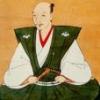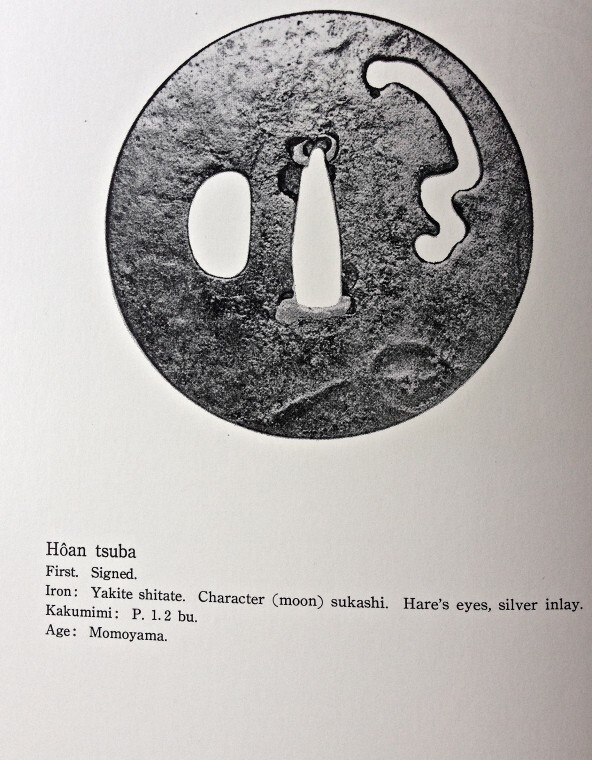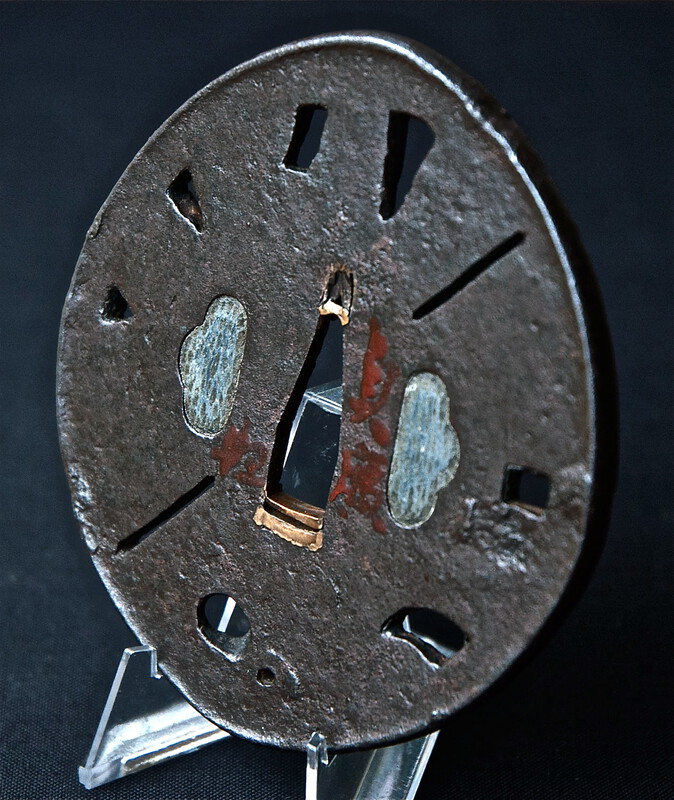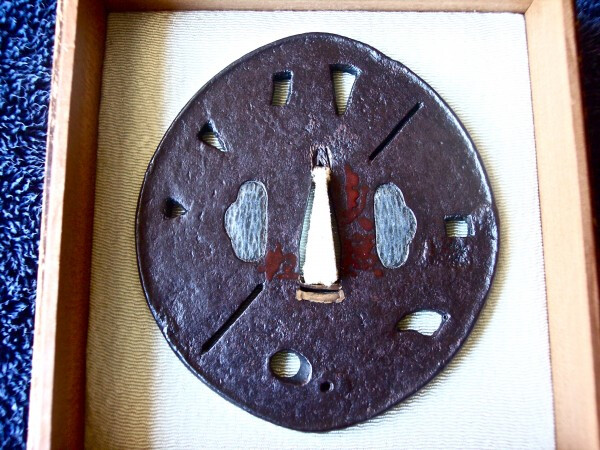-
Posts
964 -
Joined
-
Last visited
-
Days Won
4
Content Type
Profiles
Forums
Events
Store
Downloads
Gallery
Everything posted by Steve Waszak
-
Hi John, Thanks for your post here. All interesting stuff. My particular interest in this topic concerns Naomasa's dates, though, more than the typing or categorizing of Onin guards. I remain dubious about this tsuba maker's working dates being any earlier than late-Momoyama. The tsuba you reference dated to 1533 is certainly eyebrow-raising: I have to think there is an error here somewhere (as you have suggested), or simply represents an attempt to deceive. The article on Onin tsuba you provide the link to notes that Naomasa's "name is found, sometimes genuine, sometimes forged..." Given the esteem Naomasa's work was apparently held in, the notion that his signature (including dates?) could have been added later to mumei pieces isn't much of a stretch. So I don't find the tsuba dated to 1575 necessarily very compelling as hard and fast evidence, either. Another consideration here concerns the cultural and aesthetic climate of the time. Compared to the relatively austere sensibilities of Muromachi years, the Momoyama Period was far more flamboyant and alive with experiment and exuberance of expression. Yoshiro tsuba fit this context much better than they would a 1550s or 1560s dating, in my view. Then there is Ford's very intriguing work in researching brass availability and use in 16th-17th century Japan (many thanks for this post, Ford! ). Putting all of this together, it is hard for me to see Naomasa's working period beginning any earlier than the 1580s at the very earliest, with the 1590s more likely, assuming the Hideyoshi quote is legitimate. If the Hideyoshi quote is apocryphal, then I could see Naomasa's working period being even later by a decade or two. Cheers, Steve
-
Hi John, Thanks for the detailed response. Very interesting. I would certainly agree that the dated piece would very likely carry a signature, too, if for no other reason that it would be hard to know for sure that the tsuba was made by him if it weren't signed. If it were not signed, however, the inscribed date may be spurious. There were only a very few tsubako who regularly inscribed their names as early as the 1570s, so your information here is quite intriguing. In your research, did you find any mention of Naomasa's being affiliated with or serving under any particular lord? I would also be curious to know Ford's thoughts on this artist and on the matter of his working period, given Ford's research into earliest brass inlay in tsuba. Thanks again, John. Cheers, Steve
-
Hi John, Your original post mentions that Koike Yoshiro Naomasa lived in the third quarter of the 16th century. From what I've read, he was more of a late-16th century/early 17th-century man. Could you offer your source for this early dating? Thanks. Steve
-
Very sad news. A good man indeed. Rest in peace, Harry...
-
I'm a fan of this theme as well. My favorite rabbit-and-moon tsuba is below, an iron tsuba made by (shodai) Hoan. The moon is represented by what I believe is a sosho script form of the kanji for "moon." The rabbit's head is presented in a rather oblique way, in a subtle relief carving combined with yakite-kusarashi, with part of a long ear continuing onto the other side of the tsuba. A simple, but powerful design, IMHO. The image is taken from Dr. Torigoye's Tsuba Kanshoki. Cheers, Steve
-

The One You Regret The Most
Steve Waszak replied to lonely panet's topic in General Nihonto Related Discussion
My biggest regret came to have a happy ending. Some years ago, during a particular period of upheaval for me, I recklessly let the tsuba below get away. I regretted it almost from the moment I did so, but I had sold it to a collector who promised me right of first refusal in the event he would be looking to sell it. A couple of years later, this came to pass, and I was fortunate enough to get it back (thanks, M! ). I've had a few other smaller regrets, but none on the level of this one. So I am grateful that the gods smiled on me here... -
Wow. That's a shame. Certainly looks as though some substance has been applied to the whole piece and then the tsuba was buffed with an electric shoe polisher. Can you even see the actual steel now? As you say, Curran, it's definitely worse off now. Steve
-
Thanks for posting this, John. Curiously, I was looking at this very tsuba just last night in regard to early mei... However, these dates for him are, I think, a little ambitious on the early end. To me, his work expresses a sensibility that is more Azuchi-Momoyama to earliest Edo than Muromachi.
-
Rich, Yeah, I've always liked this piece... You may want to do a bit of comparison study of the mei on this tsuba with those appearing on some of the kabuto with Nobuiye's name. Going by memory (always reliable... ), the rendering of the mei here with those I've seen photos of on the helmets seems to have some similarity. There is, of course, a rather large amount of debate/controversy surrounding "Myochin Nobuiye," though, with some arguing that he is a mythological figure, and that all Nobuiye mei on extant kabuto are fakes, so it may be hard/impossible to draw any solid conclusions about the mei on this tsuba and any of those on the kabuto.
-
Hi Grev, There are actually quite a few tsubako who were chiseling their mei prior to Edo times. Among them are the Nobuiye men, Kaneie, the Yamakichibei tsubako, Hoan, Sadahiro, Umetada Mitsutada, and Umetada Myoju. There are also rare examples of other signed works believed to be pre-Edo, such as pieces by Myochin Takayoshi and Nobusada. The practice of signing tsuba appears to become established during the Momoyama Period, though it was still relatively infrequent considering all the tsuba makers working then.
-
Thanks, Rich. I have to say, I don't have a great deal of faith in the genealogies for pre-Edo groups. We've seen the question marks surrounding the genealogy of the Myochin family/group of armorers (at least pre-Momoyama), and the apparent murkiness of the origins of such tsubako schools as the Umetada and Akasaka makes me somewhat dubious of their published genealogies. You note that the Umetada made this design a lot: were they usually of this sort of dimension, though? This piece is, what, 86mm or so?
-
Rich, Great tsuba. The photo of the "blerb" you include here raises interesting questions concerning the maker of this piece. You note that the physical state of the guard suggests it was made in the Momoyama Period. I don't disagree: the various signs of age concerning the tsuba's condition, plus the size and exuberance of the motif point more toward this period than to Edo, I believe. But what's interesting here is that Umetada Myoju (the maker of the signed guard above) is a Momoyama man. So if this tsuba was not made by him, but is of his time, who might the specific tsubako have been who did make it?
-
Hi Barry, Your friend is spot on...
-
Curran is correct: Nobuiye.
-
Good question, Johnny. I find myself leaning toward their being arrows, as it seems there is depicted the extension of the arrow shaft past the feathers to provide the notch. But the motif is a bit on the abstract side, so Evan could be right. Does the motif on the other side look just the same as it does here?
-
Hi Ford, Thanks for that. What I'm encouraged by with your work here is the marriage of objective analyses and the weighing of cultural/historical contexts to more carefully fine-tune our efforts to understand these works. Too often in the world of sword studies (and the publications concerned), I have seen what I think is too myopic a view in which essentially the only things looked at are the pieces themselves. You do make a good point regarding our access to knowledge now versus what may have been available to scholars or other interested parties 150 years ago, but too often I haven't seen even an attempt made to take into account larger cultural and historical contexts. Your example of the Onin period is illustrative, I think, of how necessary it is to consider the likelihood of traditional understandings/teachings given the particulars of a context. What you are doing here with your book certainly appears to be taking cultural/historical contexts into account. Another example of doing so that I feel is necessary would be studying the intricacies of chanoyu and its associate aesthetic principles in seeking to better understand many of the tsuba made in Momoyama times. When such considerations can then also be combined with modern technical analyses, as you're doing, the way to a (far?) better understanding of what these pieces are, how they functioned socio-culturally when they were made, and how they were made looks very promising. Kudos again, Ford.
-
Thanks, Ford. Really looking forward to the book. Any estimated date as to its publication/availability?
-
Quick follow-up question, Ford, if this doesn't intrude on your book content too much: Your posts here have concentrated primarily on available Chinese technology; what is known about advanced zinc ore extraction/distillation in other cultures of the 16th century? In other words, might there have been another culture (India?) where advanced zinc processing technology may have existed and then reached Japan via all the helter-skelter trade occurring in the late 1500s? If this is a special chapter in your book, just tell me to shut up and buy your book...
-
Ford, Good stuff, once again. I have a question for you, even though it is purely speculative: what do you imagine has led scholars (or "scholars") of the past to settle on the Muromachi or Momoyama periods as the time of production for Onin and Heianjo guards? Of course, I realize that the same forces have likely been at work here as are responsible for the dating of all sorts of other unsigned early-ish tsuba, but I'm wondering if there might be something specific about Onin and/or Heianjo works that could/would have had these scholars zeroing in on a Muromachi or Momoyama dating. I guess what I'm thinking of specifically here is whether something having to do with inlay technique, inlay style, brass availability, etc... may have led to such dating. Or, conversely, was there something they saw in the plates, rather than the inlay, that directed them to their conclusions? Again, I know all of this is speculative, but such speculation has implications for many other types of tsuba beside Onin and Heianjo, and so is worth dabbling in, methinks.
-
Fascinating stuff, Ford. Most intrigued to know more...
-
I am thinking more and more that much/most (or even all?) of the brass inlay we see on Heianjo and even Onin tsuba is added later (latest Momoyama to early Edo periods) to existing steel plates produced perhaps decades earlier by the Saotome, tosho, and other groups of iron workers. The aesthetics of Heianjo guards, in particular, strike me more as in keeping with Momoyama sensibilities than those of Muromachi.
-
Book-length projects are like that: they take on a life of their own, and start to push the author around... Congrats on finishing! Now we all get to benefit!
-
Really looking forward to the book coming out, Ford.
-
Just one sparkling gem after another. Highly recommended reading.







